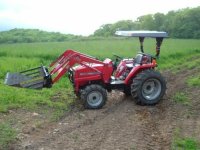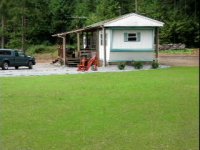Cletrac
New member
Proper use of a \"York rake\"
I own a 6" landscape rake without gage wheels which in my opinion is about useless. I borrowed a very heavy duty rake from a neighbor with gage wheels and hydraulic angle capability (Both the rake "Head" will angle but stay directly behind the machine or the whole rake will angle in a big arc that will put the head out to one side or the other behind the tractor) This was slightly better but still worthless. How do you go about raking rocks out of a pasture that has been plowed and disked? All I seem to be able to do is hook the rocks, pull them a few feet and the rake jumps over and leaves the rock behind. I have been unble to windrow them or do anything other than make a bunch of little piles all over the place. If I push the rake down more all I do is dig. To me a "york rake" looks like the biggest joke ever unleashed on the tractoring public. What am I doing wrong?
Frustrated in MA
I own a 6" landscape rake without gage wheels which in my opinion is about useless. I borrowed a very heavy duty rake from a neighbor with gage wheels and hydraulic angle capability (Both the rake "Head" will angle but stay directly behind the machine or the whole rake will angle in a big arc that will put the head out to one side or the other behind the tractor) This was slightly better but still worthless. How do you go about raking rocks out of a pasture that has been plowed and disked? All I seem to be able to do is hook the rocks, pull them a few feet and the rake jumps over and leaves the rock behind. I have been unble to windrow them or do anything other than make a bunch of little piles all over the place. If I push the rake down more all I do is dig. To me a "york rake" looks like the biggest joke ever unleashed on the tractoring public. What am I doing wrong?
Frustrated in MA


